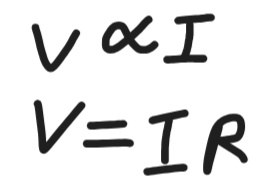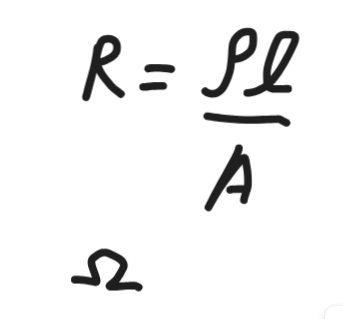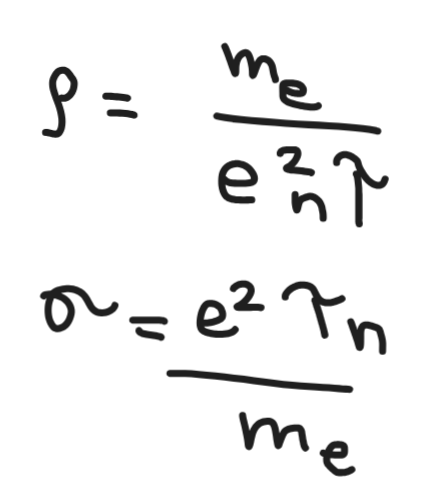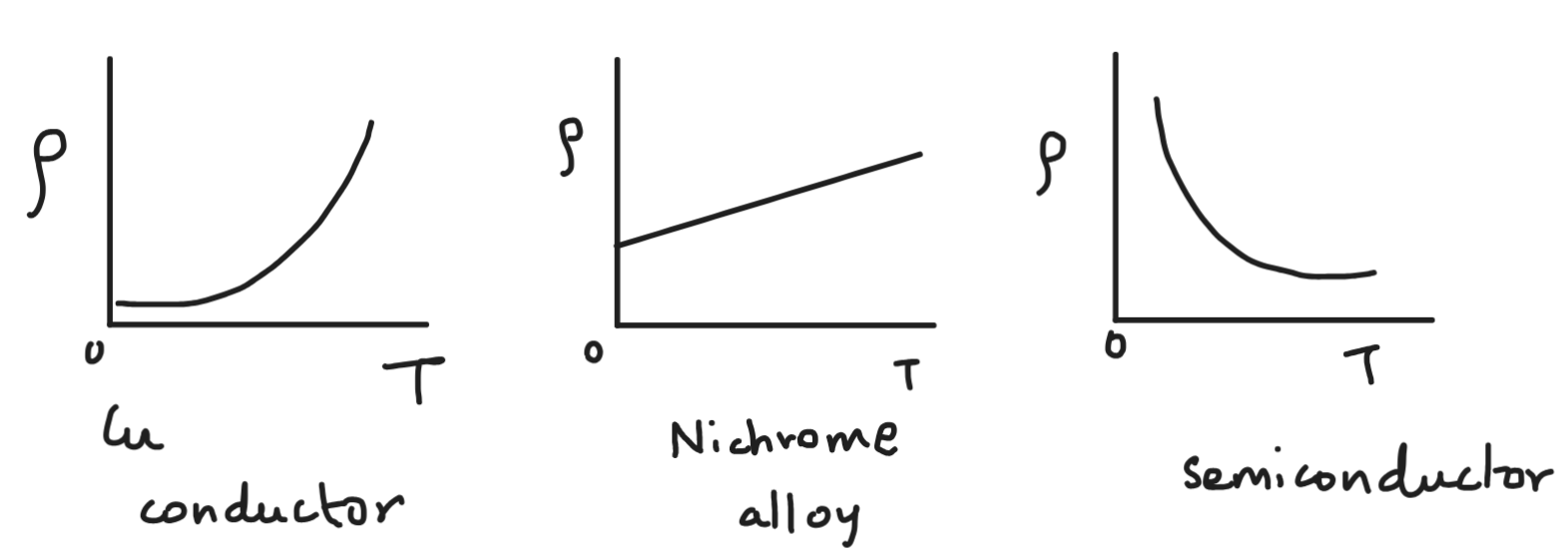ch 3- current electricity
1/19
There's no tags or description
Looks like no tags are added yet.
Name | Mastery | Learn | Test | Matching | Spaced |
|---|
No study sessions yet.
20 Terms
Ohm’s law
At constant temperature current flowing through a circuit is directly porportional to the potential difference between its ends.

resistance
unit ohm

resistivity
conductivity
ρ=1/σ
unit- ohm meter
σ=1/ρ
unit- mho meter or ohm-1meter

current density
Electric current flowing normally per unit area around a point
j=I/A
unit- A/m² or Am-2
drift velocity
average velocity with which free electrons are drifted under the influence of an electric field.
vd= -Eeτ/me
Relaxation time (τ)
average time interval between succesive collisions of electrons with the atom.
relation between relaxation time and drift velocity
vd= -Eeτ/me
mobility (μ)
vd/E=eτ/me
unit- m²s-1V-1
magnitude of drift verlocity per unit electric field
relation bewtween Vd and current
I=nAevd
Ohm’s law in vector form
j=Eσ
limitation of ohm’s law
Ohm’s law is not a basic law nature. Conductors which do not follow ohm’s law as called non ohming conductors
V ceases to be proportional to I.
relation between V and I varies with the sign of V ex- diodes
relation between V and I are not unique. That is for the same value of current different values of voltage are obtained. Ex- GaAs
difference between Ohmic and non-Ohmic conductors
Ohmic conductors are conductors which obey ohm’s law (graph of V and I is linear) and non ohmic conductors are conductors which do not obey ohm’s law (graph of V and I is not linear)
ex of ohmic conductors- metal, nichrome
ex of non-ohmic conductors- semiconductors, diodes and transformers
why is nichrome, magnin and constantan used as resistance coils in resistance boxes?
temp coefficient small value
resistivity is high
Magnin- Cu, Mn, Ni
Constantan- Cu, Ni
Nichrome- Ni, Cr
temp coefficient for conductors, semiconductors, alloys
resistivity vs. temp graph
metals- positive semiconductors+insulators- negative, alloys- smaller than pure metals

expression for temperature co-efficient of resistivity
ρT= ρ0[1+α(T-T0)]
ρT= resistivity at ToC
ρo=resistivity at 0oC
α=temperature coefficient of resistivity unit K-1
Internal resistance r
resistance offered by the cell when current flows through it
relation connecting terminal potential difference and Emf
EMF=terminal potential difference+lost volt
V = ε – Ir
EMF (ε) vs. terminal potential difference (V)
EMF potential difference between the positive and negative electrodes of a cell in an open circuit i.e. no current flowing through the cell.
terminal potential difference is the potential difference between positive and negative electrodes of a cell in a closed loop i.e. current flows through the cell.
Kirchoff’s junction rule and loop rule
At any junction, sum of current entering the junction is equal to the sum of current leaving the junction.
Algebraic sum of change in potential around any closed loop involving resistors and cells is 0.

wheatstone bridge principle
When the bridge is balanced, Ig=0,
R2/R1=R4/R3